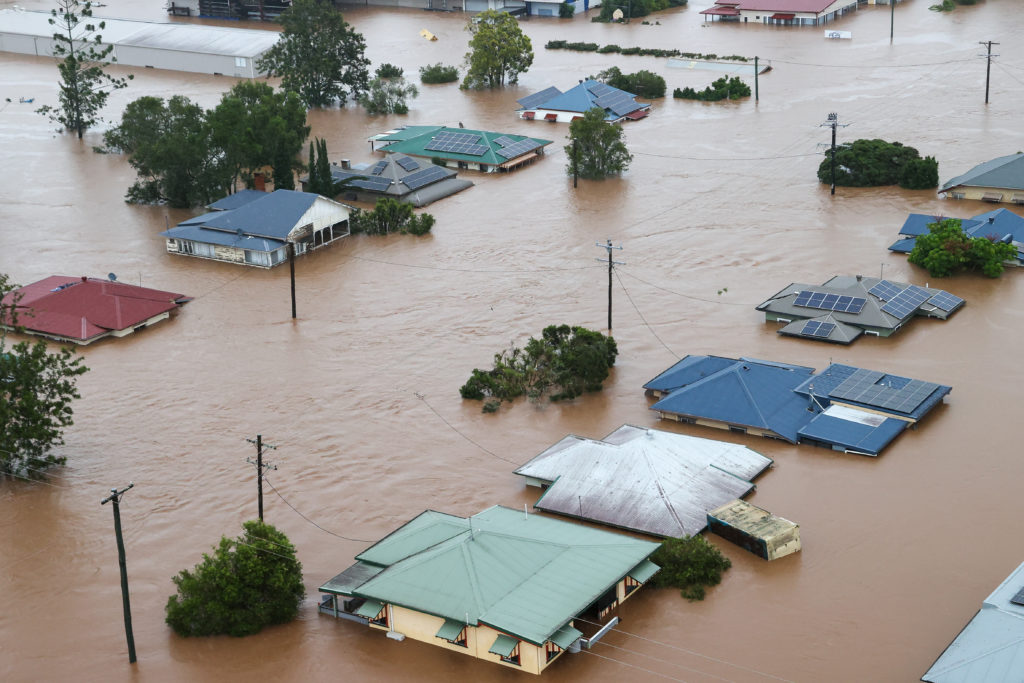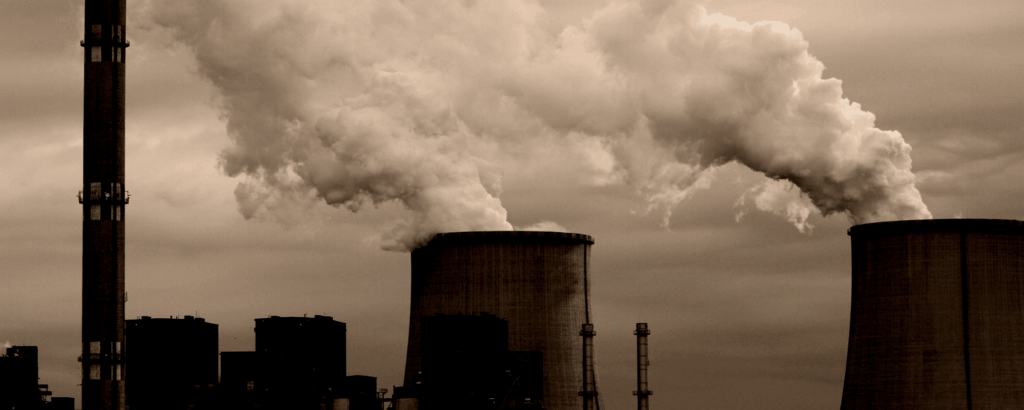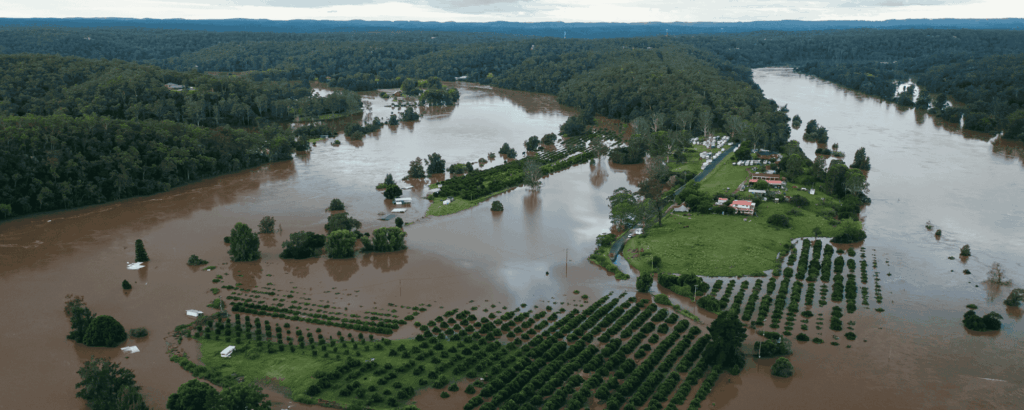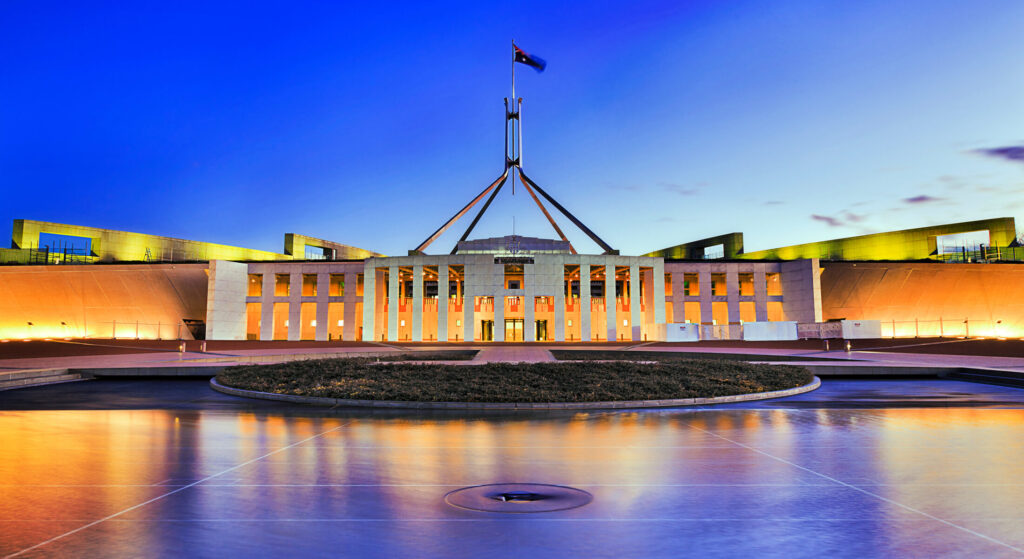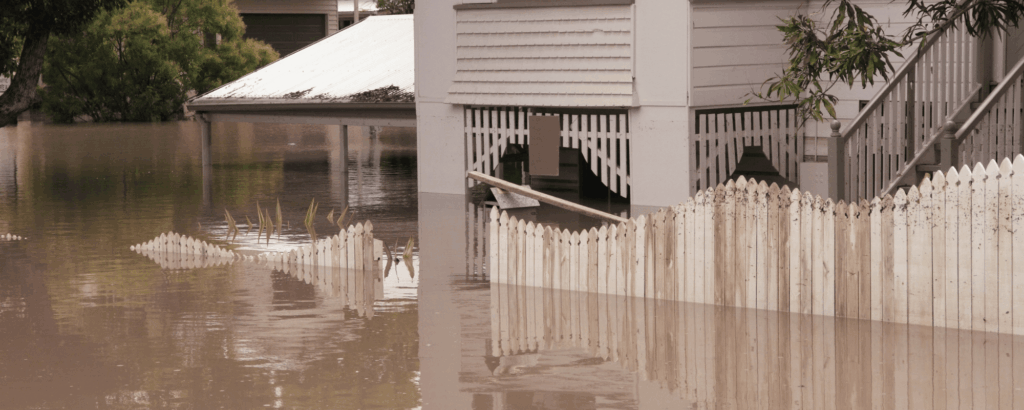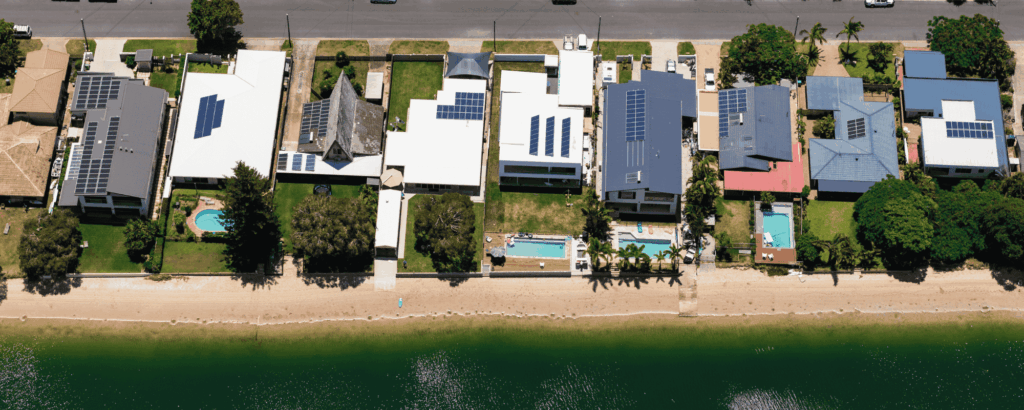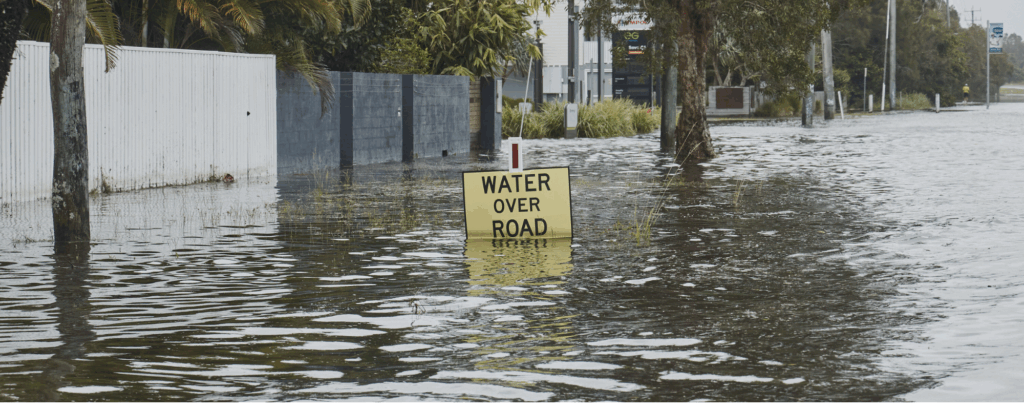The Australian Government will soon set its 2035 climate target. The strongest possible target must be set to ensure the protection of future generations from worsening climate impacts, in Australia and around the globe.
Here is everything you need to know about climate targets.
What is a climate target?
A goal to reduce a country’s climate pollution, which then guides a nation’s climate policy. Australia’s current climate target is 43% reduction on 2005 levels by 2030 and to net zero by 2050.
Who sets Australia’s target?
The independent Climate Change Authority (CCA) provide advice to the Australian Government on setting and achieving its 2035 target. The Climate Change Act requires the Government to consider that advice in then setting a target. Australia is then expected to announce our 2035 climate target (known as a Nationally Determined Contribution) in September this year.
How are we going in meeting our 2030 target?
In 2022 the Albanese Government set a new target of 43% reduction by 2030, backed by new policies and investment. Australia is now projected to achieve a 42.6% cut by 2030.
Australia’s climate policies have helped grow renewable power in our main grid to 43%. Already, over 33,000 Australian workers are building and maintaining Australia’s electricity generation, storage, and transmission, and another 40,000 workers will be needed by 2030. Four million homes now have solar panels, saving an average of $1,500 each year, while households with both solar and a battery can save about $2,300. Prices are lower for households without solar too, with renewable power reducing bills by 8 to 21% last year, depending on the state.
Why does it matter?
Climate pollution from burning coal, oil and gas has formed a thick blanket of heat-trapping gases around the world. The excess heat is driving more ferocious and frequent fires, floods and heatwaves, as well as making all our weather more volatile and unpredictable. This has significant costs:
- Disasters cost the Australian economy $2.2 billion in just the first six months of 2025.
- It is estimated that 80,000 properties across the nation have become effectively uninsurable since 1990, primarily due to worsening climate risks.
- Annual average farm profits are estimated 23% lower since 2000 due to climate change.
A recent government report, the National Climate Risk Assessment, outlines the dangerous climate impacts expected in Australia. Read our briefing paper on this report here.
What do the climate scientists say is necessary to protect Australians?
Scientists consider how to keep Australians as safe as possible from worsening climate disasters. Stronger targets reduce climate risk, while weaker targets means more disasters and danger. The Australian Academy of Sciences and Climate Council’s recent scientific analysis shows that net zero by 2035 has the strongest chance of preventing massive disruption to the global climate system.
What are our international obligations?
The Paris Agreement requires all countries to set the strongest possible targets. Efforts should be ratcheted up from the 2030 target and represent a fair share (based on our population and wealth) of holding global heating as close as possible to 1.5ºC, and well-below 2ºC. UN climate chief Simon Stiell has called for Australia to “go big”.
What will current policies achieve by 2035?
With only current government policy, Australia is already expected to cut climate pollution by at least 51% by 2035. Together state and territory climate targets add up to a 66-71% reduction in Australia’s climate pollution by 2035. The East Coast states all have targets 70% or more: Victoria (75-80%), NSW (70%) and Queensland (75%). Tasmania is already at net zero.
What are the risks if we fail to curb climate pollution?
Australians have already experienced some of the early, but severe impacts of fossil-fuel driven climate change, from the Black Summer bushfires to South Australia’s current algal bloom. Yet, things will get worse if we fail to accelerate action. Unchecked climate change is expected to cost Australia $4.2 trillion by 2070 (in A$2025) and lead to twice as many homes becoming uninsurable by 2100. The Great Barrier Reef will be lost, and 50ºC days will regularly occur in Sydney and Melbourne.
Is a strong target possible?
Yes, Australia has an enviable set of advantages, which help us cut climate pollution. We’re the sunniest country in the world, and one of the windiest, and we have the world’s third-cheapest renewable power. Plus, we have ample land, a skilled workforce, and the minerals and metals needed to make pollution-cutting technologies.
Independent analysis from four different organisations have shown that climate pollution cuts of at least 75% by 2035 are economically and technically possible.. In April 2024, the Climate Change Authority’s preliminary advice to the Government also found that a 2035 target in the range of 65-75% is achievable. Over time, improvements in technology improvements are likely to make it even more possible.
What would a strong target mean for our economy?
EY’s Net Zero Centre has found that “the economic case for ambitious action is now stronger than ever”. The transition will have costs, but these are much smaller than the costs of climate disaster. Strong targets keep Australians safer, reducing impacts on farmers, workers, and businesses.
Strong targets provide essential certainty to business, allowing early and decisive investments in cleaner, more efficient energy sources and machinery. Investing in energy upgrades would have big benefits for our economy, with international evidence suggesting energy investments can increase a business’s overall productivity by 1.4% to 3.6%.
As the Albanese Government seeks to establish green export industries under the Future Made in Australia plan – which could create 400,000 jobs by 2040, and be worth almost $1 trillion to Australia by 2060 – this credibility is essential to build the trading relationships that can drive prosperity for decades to come.
Benefits can also flow through to households and will grow clean energy jobs. By 2034, Australian families could cut their total energy bills by over 80% with solar, an all-electric home and an electric vehicle. Meanwhile, another 40,000 workers in generation, storage and transmission alone will be needed by 2030, with 2-3 times more working on electrifying households, transport and businesses.
Will Australia’s action make a difference?
Australia is the 15th biggest polluter in the world – bigger than 182 countries. Australia is vulnerable to climate impact and, like trade negotiations or security pacts, Australia’s interests are served by being part of the group shaping global decisions. To have credibility – we have to tackle our own pollution.
What are different organisations calling for?
Many organisations are publicly calling for strong, science-aligned climate targets, with the majority calling for a climate pollution reduction between 75% reduction and 100% (net zero). This includes several unions, over 500 businesses, dozens of social service organisations, community and religious groups, and climate and environment organisations like WWF, ACF, and us – the Climate Council.
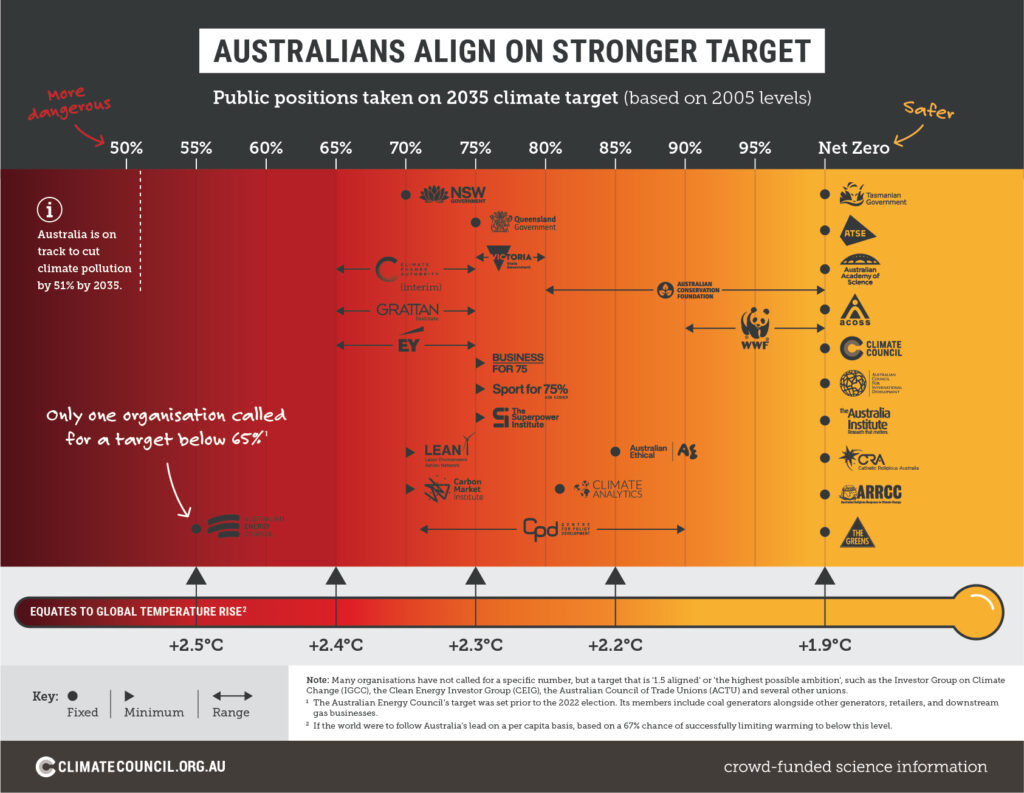
Climate Council has launched a petition calling on the Australian Government to set the strongest possible 2035 climate target – and take urgent action to meet it!
¹ Regulations for 2030 to 2035 under two of Australia’s main climate policies – the New Vehicle Efficiency Standard and Safeguard Mechanism – are expected to be set in 2026-27, which will see further significant cuts to 2030. Current projections assume these rules cease or fall back to default settings, which are substantially weaker than current rules, allowing significant further cuts to be achieved through simply aligning 2030 regulations for existing policies with the current regulation’s trajectory.


